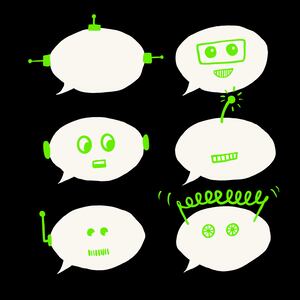If you have painful memories of high school Spanish, or stumbling through ordering a meal while traveling abroad, you’re not alone. Though more Americans than ever report speaking a second language at home, many Americans remain monolingual. Language learning apps have attempted to change that for well over a decade, many of which have recently championed their new use of artificial intelligence as the most effective way to learn a language.
Apps like Duolingo have embraced AI to generate varied exercises and provide basic grammar lessons to users. Natulang, a new AI-powered language-learning app, is one of the first to feature an entirely AI and audio-based curriculum. Through its speech recognition and synthesis model, it pledges to teach the speaking skills so many apps have tried and failed to effectively teach.
Language learning has undergone a revolution over the last few decades. Gone are the days of learn-in-your-car cassettes or phonetic phrasebooks. Apps like iTalki or Verbling that pair users with inexpensive contract tutors have made it possible to learn an entire language from your phone or computer for very little money.
You can find adults embracing self-study methods on different web forums like Reddit’s r/LanguageLearning subreddit where thousands of users provide tips and support for hopeful polyglots.
Natural spoken conversation represents a final frontier for many learners who aren’t immersed in their chosen language. Anyone who has taken a language class can likely relate: hours in front of a textbook, conjugation tables, and flashcards don’t necessarily translate to fluent conversation. So then, how should the learners who don’t have the time, money, or confidence to work with a human teacher learn to speak in their new language?
Your Robot Language Tutor
Many of the most popular apps have long relied on speech synthesis, a form of AI which helps the robot voice sound more human by mimicking speech patterns and tone while still preserving that distinctly perfect diction. But every app has taken on the ongoing AI revolution differently.
For example, Babbel has introduced a new classroom program where users can book a drop-in virtual language class in much the same way you book a yoga workout. Memrise, an app that relies heavily on video and audio of native speakers chatting, has developed a language bot that will type chat messages in almost-real time with users (there’s still a noticeable delay between prompt and message). On the extreme side of commitment to AI is Duolingo, which created a third tier of their subscription model for AI-enhanced learning (and notably fired 10 percent of its contractor staff at the end of 2023).
However, Natulang represents the furthest end of the AI use spectrum with its speech recognition model. Unlike apps that rely on tapping pre-selected words, Natulang is an almost entirely speech-based app. The app only displays an ongoing conversation log, with no ads, flashy animations, or streaks. This is deliberate, app developer Maksym “Max” Hryniv told The Daily Beast. It’s also part of why he believes Natulang is effective.
The concept is simple. The app asks you to say a short phrase in your target language. If you get it right, you move to the next phrase. If you get it wrong, the app corrects you. You move through a simple conversation this way, reusing grammar structures and vocabulary until it becomes second-nature.
Natulang was born out of Hryniv’s desire to teach language the way he—as a Ukrainian who grew up speaking Ukrainian, Russian, and Polish and later learned French and English—had learned it: constant audio immersion. Immersion is key to language-learning. It’s how toddlers acquire language long before they attend school, and research has shown that immersion can train adults learning a new language to “think” like a native speaker. The app has a team of human linguists who build the progressive lesson plans and uses AI for its speech recognition and synthesis.
Though Hryniv acknowledges that AI is imperfect and that humans need to be involved in the education process, he believes strongly in the power of Natulang and in its technology. “Every aspect of classic education will get transformed or even replaced by AI,” he said.
Use With Caution
Not all language learning experts are convinced that AI can or should replace human instruction. Marta García, who teaches English as a learned language to grades K-5, has deliberately resisted bringing technology into her post-pandemic classroom.
“The emphasis had to be on developing relationships, social skills, and how to be in public after months of school closures and online learning,” she said. “Language can’t be separated from culture, from social interaction.” While she believes it’s possible for AI to be incorporated as a supplement to language learning, she says that students are already struggling with the rote “roboticism” of the classroom.
García’s students are mostly immigrants, and her teaching is intrinsically tied to anti-racism, social justice, and decolonization. These are factors that we know AI is uniquely unequipped to deal with. There are dozens of examples of AI replicating human bias, like image generators that generate hypersexualized images of women, facial recognition software that can’t tell Black faces apart, or chatbots that will spew racist language.
Even a bot that never replicates overtly racist language can still perpetuate linguistic discrimination. AI favors standard American English over syntax associated with working-class variations of English (for example, preferring “isn’t” to “ain’t” and “you” to “y’all”). Every language has accents and regionalisms that speak to identity markers of class, age, and race—distinctions AI has been trained to ignore.
Willie Edward Taylor Carver Jr., the 2022 Kentucky Teacher of the Year, has incorporated AI into his high school English curriculum, and has considered using AI in his French classes in a limited capacity. But he expressed similar concerns to García about letting AI take over classroom planning or teaching.
“AI was built from the language of people: a giant corpus of people with bias, with racism, with sexism, with trans- and homophobia,” he said. “I worry that we are condemning future generations to be limited by the reach of the social justice movement of the early 21st century.”
Most language teachers and experts agree that time, immersion, and motivation are the ingredients to language proficiency. But for shy learners with an internet connection, an AI bot might be a useful way to get started. Just don’t be surprised when native speakers pause at your slightly mechanical accent.








